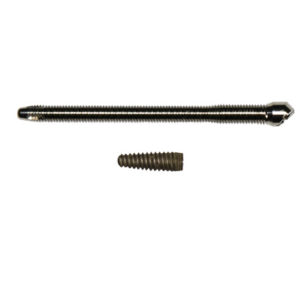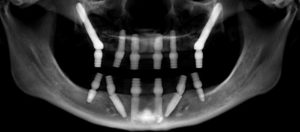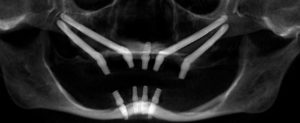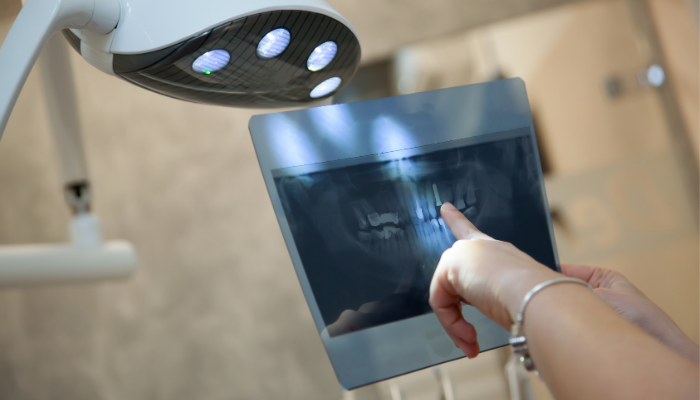Bone loss is a common problem in the jaw. Those seeking dental implants who suffer from bone loss often receive a bone grafting procedure, which can result in a lengthy healing process before implants can be placed. But are there bone grafting alternatives? This article will discuss bone loss, bone grafting, and alternate procedures that may be a better option for you.
Why Does Bone Loss Occur in the Jaw?
Tooth Loss/Extraction – When teeth go away, bone goes away. Teeth are surrounded and supported by alveolar bone, which creates the ridges that help teeth remain embedded. When teeth are lost or extracted, the alveolar bone begins to degrade. This is known as bone resorption, or bone loss. For some patients, bone loss becomes noticeable in as little as two weeks after the removal of a tooth. In others, it may take a year or more.
Periodontal Disease – In cases of periodontitis, bone loss may begin before tooth loss occurs. Bacteria can slowly consume the underlying jawbone and periodontal ligaments that attach the tooth with the bone. After these erode, the tooth may be lost, and the resorption escalates.
Smoking – Smoking tobacco weakens your body’s ability to fight infection, making your more at risk of gum infection and often escalates periodontal disease.
Misaligned Teeth – Alveolar bone requires consistent stimulus from chewing pressure. When teeth are misaligned, some teeth aren’t adequately stimulated during chewing, leading to bone loss.
Dentures – Dentures can exacerbate bone loss due to rubbing against the gum tissue.
How Can I Avoid Bone Loss?
Dental Implants – The most common and effective method of preventing bone loss is to have dental implants placed immediately following tooth extraction. Titanium implants imitate the role of a natural tooth root, providing stimulation to your jawbone and allowing osseointegration (fusion with the bone).
Socket Preservation Grafts – If you are unable to have dental implants placed after a tooth extraction, grafting material can be added in the socket to help preserve the bone and slow the rate of resorption.
What Is a Bone Grafting Procedure?
Dental bone grafting procedures involve exposing the bone of the jaw and adding bone material to it. This procedure is usually performed in order to provide a dense and thick enough foundation for the placement of a dental implant.
Unfortunately, the healing phase of a bone graft requires a number of months before the implant can be placed. Some oral surgeons offer bone grafting procedures in combination with Platelet Rich Plasma (PRP) Therapy, which claims to speed up the healing process by injecting the patient’s plasma into the surgical site.
Additionally, implants embedded in grafted bone are at higher risk of failure than implants placed in natural bone.
Are There Alternatives to Bone Grafting?
While bone grafting may be the only bone loss solution for single dental implants, there are alternative options available for those seeking full arch or full mouth dental implants.
A single prosthetic tooth relies solely on it’s underlying implant to remain secure. When bone is missing in these individual areas, bone grafting may be the only reasonable option.
A full arch prosthesis, however, can be fastened to the jaw by as little as 4-6 implants, combining to provide sufficient reinforcement. If 4-6 locations in your jaw have adequate bone, a full arch of prosthetic teeth can be placed.
In cases of advanced bone loss, there may not be sufficient bone remaining to place implants in the jawbone. In these cases, there also may not be enough surrounding bone for a bone grafting procedure. At this point, many dental professionals might consider a patient ineligible for dental implants. However, some oral surgeons specialize in a bone grafting alternative: zygomatic implants. Zygomatic implants can be placed for a full arch prosthesis in the upper jaw.

Zygomatic Implants – Zygomatic implants are longer than traditional implants and are embedded in the zygoma (cheekbone) rather than the jawbone. The zygoma is dense and thick enough to act as a foundation for the implant. If you lack bone in your upper jaw, you can still have an upper full arch of teeth placed in one day without any need for bone grafting. Implants placed in the zygoma have a higher success rate than implants placed in grafted bone. Zygomatic implant placement is one of the most safe and effective procedures in oral surgery.


Zygomatic implants are an ideal solution for patients with bone loss in need of full upper sets of teeth. They are not an option for single implant procedures.
Unfortunately, few oral surgeons place zygomatic implants on a regular basis. Depending on your location, you may need to travel to be treated by a surgeon that specializes in zygomatic implant placement.
Interested in Zygomatic Implants?








